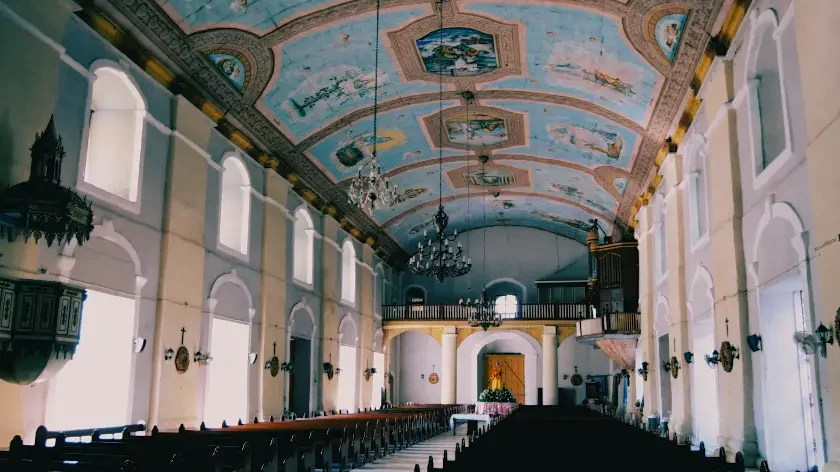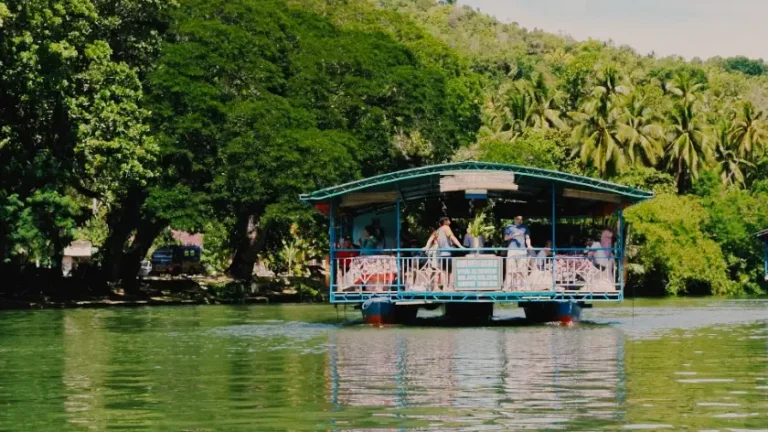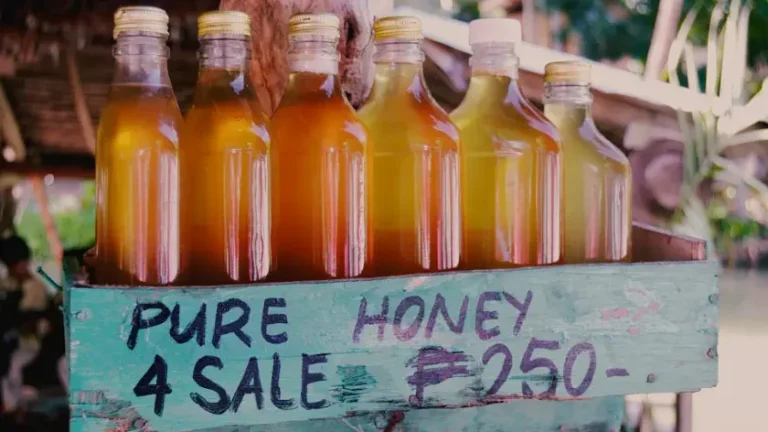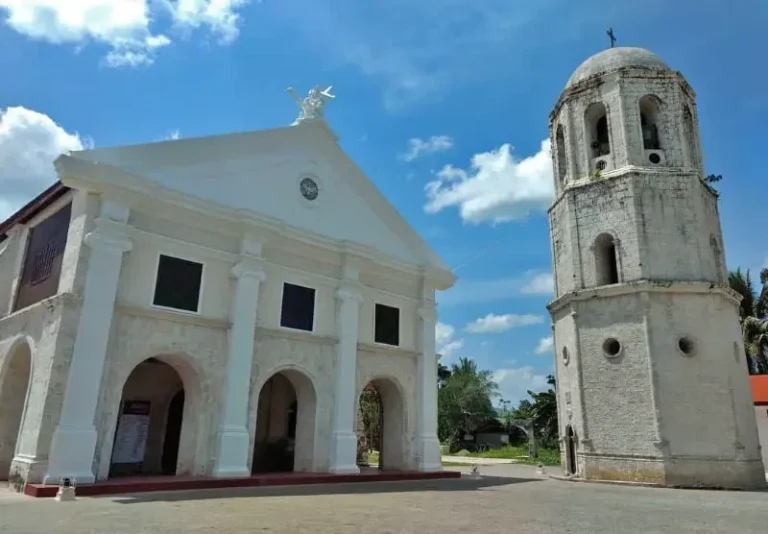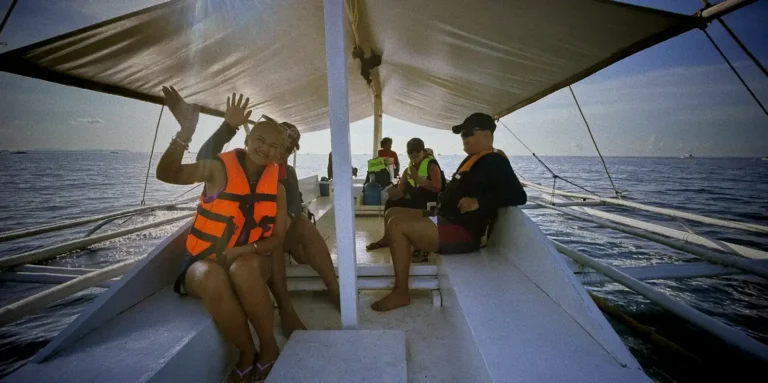Bohol Spanish Churches
Bohol’s Spanish Colonial Churches: Complete Heritage Guide to 16th-19th Century Sacred Architecture
Walking into Baclayon Church feels like stepping through a portal to the 16th century. The massive coral stone walls, weathered by four centuries of tropical storms and earthquakes, whisper stories of Spanish conquistadors, Augustinian friars, and the Filipino craftsmen who built these monuments with their bare hands.
All Bohol and Cebu Tours & Excursions in 2025
- 👉 Secure your Bohol adventure before spots sell out” — trusted by 50K+ travelers with instant confirmation
- 👉 Swim with whale sharks tomorrow”” — last-minute Cebu packages with guaranteed availability
- 👉 Why choose when you can have both?” — Bohol + Cebu packages from ₱5,999
- “Book now, decide later with free cancellation”
Living Monuments to 400 Years of Faith & Resilience
Bohol’s collection of Spanish colonial churches represents one of Southeast Asia’s most remarkable examples of earthquake-resistant architecture married to European Baroque aesthetics. These aren’t just tourist attractions – they’re living testaments to cultural fusion, engineering innovation, and unwavering faith that survived pirates, wars, and natural disasters across four centuries.
From 1595 when Jesuit missionaries laid the first coral stones of Baclayon Church to the devastating 2013 earthquake that revealed centuries-old construction secrets, these sacred structures tell the story of how European religious architecture adapted to tropical realities while Filipino artisans infused local artistry into foreign designs.
The Birth of Sacred Architecture in Paradise
When Spanish missionaries arrived in Bohol in 1565, they faced an unprecedented challenge: how to build permanent European-style churches in a land of earthquakes, typhoons, and tropical humidity using only local materials and indigenous labor. The solution would create an entirely new architectural style – Philippine Earthquake Baroque.
The Augustinian Recollects and Jesuits who spearheaded church construction weren’t just priests – they were engineers, architects, and cultural diplomats rolled into one. Working with Filipino master craftsmen and Chinese artisans, they developed construction techniques that would influence church building across the Spanish Philippines for three centuries.
Baclayon Church: The Pioneer Project (1595-1727) The construction of Baclayon Church exemplifies this remarkable collaboration. Jesuit Father Juan de Torres began laying coral stone foundations in 1595, but the church wouldn’t reach completion until 1727 – a staggering 132-year construction period that spanned five generations of builders.
This extended timeline wasn’t due to inefficiency but necessity. Coral stones had to be quarried from coastal reefs during low tide, transported by carabao cart, and aged for months before use. The lime mortar required burning tons of coral in kilns, while hardwood beams demanded careful selection and seasoning of molave and narra timber from Bohol’s virgin forests.
“These churches stand as monuments to human perseverance – imagine building a cathedral one coral stone at a time across multiple lifetimes.” – Dr. Fernando Zialcita, Cultural Anthropologist ⭐⭐⭐⭐⭐
Engineering Marvels Disguised as Sacred Spaces
What appears to be simple religious architecture actually represents sophisticated earthquake engineering centuries ahead of its time. Bohol’s Spanish churches pioneered construction techniques that modern seismic engineers still admire today.
The Fortress-Style Foundation Strategy Church walls in Bohol measure 1-1.5 meters thick – nearly twice the width of comparable European churches. This wasn’t aesthetic choice but survival necessity. The massive coral stone walls create incredible stability during earthquakes while providing thermal insulation against tropical heat.
Loboc Church demonstrates this engineering philosophy perfectly. Built between 1602-1638 by Jesuit Father Gabriel Sanchez, the structure features walls so thick that interior rooms were carved directly into them. During the 2013 earthquake measuring 7.2 magnitude, while many modern buildings collapsed, these centuries-old walls remained standing.
Revolutionary Bell Tower Design Perhaps the most ingenious innovation was the detached bell tower concept. Spanish architects quickly learned that attaching tall bell towers to church naves created catastrophic failure points during earthquakes. The solution: build campanarios as separate structures connected only by covered walkways.
Dauis Church’s octagonal bell tower, completed in 1697, stands 15 meters from the main church. During earthquakes, the tower can sway independently without damaging the nave. This design was so successful that it became standard across earthquake-prone regions of the Spanish Empire.
The Sacred Well Engineering Marvel Dauis Church houses one of the Philippines’ most mysterious engineering features – a sacred well that produces fresh water despite being built on coral limestone just meters from the sea. Local tradition credits miraculous intervention, but geological evidence suggests Spanish engineers identified a rare freshwater lens and built the church specifically to protect this precious resource.
Artistic Fusion: When European Baroque Met Filipino Creativity
The true magic of Bohol’s Spanish churches lies not in their European elements but in how Filipino artisans transformed foreign architectural concepts into uniquely Philippine expressions of faith and artistry.
The Retablo Revolution Step inside any Bohol church and your eyes immediately draw to the retablo mayor – the elaborate wooden altarpiece rising behind the main altar. These aren’t European imports but masterpieces created by Filipino woodcarvers who had never seen a European cathedral.
Loboc Church’s retablo, carved between 1734-1748 by master artisan Juan Gamutan, incorporates traditional Filipino motifs into Catholic iconography. Seashells, tropical birds, and vine patterns weave between images of saints, creating a visual theology that speaks to both Spanish religious doctrine and indigenous spiritual traditions.
Coral Stone Carving Mastery The façade reliefs of Baclayon Church showcase another uniquely Filipino art form. Local stoneworkers discovered that Bohol’s coral stone, while perfect for construction, was too soft for detailed European-style sculptures. Instead, they developed a distinctive low-relief carving technique that created beautiful decorative elements while maintaining structural integrity.
Kapis Shell Innovation Before glass was available, Filipino craftsmen solved the tropical lighting challenge using translucent kapis shells set in wooden frames. These natural windows provided soft, diffused light perfect for worship while filtering harsh tropical sun. Many Bohol churches still retain original kapis windows, creating ethereal lighting effects that enhance the spiritual atmosphere.
Bohol Spanish Churches That Survived Pirates, Wars & Natural Disasters
Each of Bohol’s historic churches carries battle scars from four centuries of defending both faith and community against human and natural threats.
Maribojoc Church: Fortress Against Moro Raiders Built between 1768-1798, Maribojoc Church was designed as much for defense as worship. The thick walls contained gun ports, while the detached bell tower served as a watchtower scanning for Moro pirate ships. During raids, the entire community would shelter within the church compound, turning sacred space into fortress.
The 2013 earthquake finally brought down these ancient walls, but restoration efforts revealed fascinating construction details including hidden chambers that stored weapons and food supplies during sieges.
Jagna Church: American Colonial Adaptations When American colonial authorities took control in 1898, many churches underwent “modernization” that often destroyed original features. Jagna Church (built 1803-1825) represents a rare example of successful adaptation, where American engineers reinforced the structure while preserving original coral stone construction and Filipino woodcarving.
Dimiao’s Twin Churches: A Theological Engineering Puzzle Perhaps the most intriguing architectural mystery in Bohol is Dimiao’s side-by-side churches built in the 1800s. Local tradition explains they served different parishes, but architectural evidence suggests one was built as a backup in case earthquakes destroyed the other – essentially ecclesiastical redundancy planning.
All Bohol and Cebu Tours & Excursions in 2025
- 👉 Secure your Bohol adventure before spots sell out” — trusted by 50K+ travelers with instant confirmation
- 👉 Swim with whale sharks tomorrow”” — last-minute Cebu packages with guaranteed availability
- 👉 Why choose when you can have both?” — Bohol + Cebu packages from ₱5,999
- “Book now, decide later with free cancellation”
The 2013 Earthquake: Destruction That Revealed Secrets
On October 15, 2013, a magnitude 7.2 earthquake struck Bohol, causing unprecedented damage to the island’s historic churches. But this tragedy also became an archaeological opportunity, revealing construction secrets hidden for centuries.
Unexpected Archaeological Discoveries When Loboc Church’s façade collapsed, restoration teams discovered original 17th-century wall paintings hidden beneath 20th-century whitewash. At Baclayon, fallen walls revealed the original coral stone quarry marks and mason signatures carved into foundation stones.
Most remarkably, engineers discovered that many churches had been secretly reinforced during various historical periods. Hidden iron tie-rods installed during the 19th century, concrete buttresses added during the American period, and steel bracing from post-WWII repairs – each generation had quietly strengthened these structures while preserving their historical appearance.
Modern Restoration Using Ancient Techniques The post-earthquake restoration project became a masterclass in historical construction methods. Filipino craftsmen relearned traditional coral stone cutting, lime mortar mixing, and hardwood joinery techniques that had been nearly forgotten.
At Baclayon, restoration teams quarried new coral stones from the same reefs used by 16th-century builders, aged them using traditional methods, and set them with lime mortar mixed according to Spanish-era recipes. The project took six years and demonstrated that ancient building techniques could meet modern seismic safety standards.
Living Heritage: Churches Still Serving Communities
What makes Bohol’s Spanish churches truly remarkable is their continued role as vibrant community centers rather than mere museums. Sunday masses fill these spaces with the same Visayan hymns that have echoed through their walls for centuries.
Baclayon: The Mother Church Legacy As the oldest stone church in Bohol and second-oldest in the Philippines, Baclayon continues hosting major religious celebrations that attract pilgrims from across the Visayas. The church’s National Cultural Treasure designation ensures protection while allowing continued religious use.
Dauis: Pilgrimage Destination The Church of Our Lady of the Assumption in Dauis remains one of the Philippines’ most important Marian pilgrimage sites. The sacred well continues producing fresh water, drawing thousands of devotees annually seeking healing and spiritual renewal.
Loboc: Cultural Performance Venue Beyond regular worship, Loboc Church serves as a cultural center where the world-famous Loboc Children’s Choir performs traditional Filipino music in a setting that enhances both artistic and spiritual expression.
Architectural Elements That Define Bohol’s Church Style
Understanding the specific architectural features helps visitors appreciate the ingenuity and artistry embedded in every element of these remarkable structures.
The Earthquake-Baroque Façade Bohol church façades follow a distinctive formula: massive lower sections with minimal ornamentation, upper levels featuring simple geometric patterns, and thick horizontal cornices that create visual weight while providing structural stability.
Interior Spatial Design Single-nave layouts with exposed hardwood trusses create intimate worship spaces that encourage community participation. The low, wide proportions – a departure from soaring European Gothic – reflect both seismic engineering and tropical climate adaptation.
Bell Tower Innovations The evolution from attached to detached bell towers tells the story of Spanish architects learning from earthquake damage. Early churches like Baclayon feature attached towers, while later churches universally adopted detached designs.
Visiting Bohol’s Church Heritage Trail
Planning a thoughtful church heritage tour requires understanding both historical context and practical considerations for respectful visits to active places of worship.
Essential Churches for Heritage Tours
- Baclayon Church (1595-1727): Start with the oldest for historical context
- Dauis Church (1697): Experience the sacred well phenomenon
- Loboc Church (1602-1638): Witness the finest retablo artistry
- Maribojoc Ruins: Understand earthquake impact and restoration challenges
Best Visiting Times Early morning (7-9 AM) or late afternoon (4-6 PM) provide optimal lighting for photography and comfortable temperatures for extended visits. Avoid Sunday mornings when churches serve active congregations.
Photography Guidelines Most churches welcome respectful photography but prohibit flash and require permission for professional equipment. The interplay of natural light through kapis windows creates stunning photographic opportunities during golden hour.
Cultural Sensitivity Requirements These remain active houses of worship requiring modest dress, quiet behavior, and respectful interaction with ongoing religious activities. Many churches request donations for maintenance and restoration efforts.
Supporting Church Heritage Conservation
Visiting these remarkable structures supports ongoing conservation efforts that preserve irreplaceable cultural heritage for future generations.
The 2013 earthquake restoration cost over ₱500 million, funded through government heritage programs, international donations, and tourism revenue. Your heritage tour payments directly support maintenance, security, and educational programs that keep these treasures accessible.
Many churches offer “adopt-a-stone” programs where visitors can sponsor restoration of specific architectural elements. These contributions ensure traditional craftsmen maintain skills necessary for authentic historical preservation.
Conservation Challenges Tropical climate creates ongoing preservation challenges. High humidity damages wooden elements, while salt air corrodes metal fixtures. Rising sea levels threaten coastal churches, making climate adaptation part of modern conservation strategy.
Book Your Bohol Church Heritage Adventure
Exploring Bohol’s Spanish colonial churches offers a journey through 400 years of cultural fusion, architectural innovation, and unwavering faith. These monuments represent the Philippines’ most sophisticated examples of earthquake-resistant historical architecture while showcasing the artistic genius of Filipino craftsmen.
From the massive coral stone walls that withstood centuries of earthquakes to the intricate retablos carved by master Filipino artisans, every element tells stories of cultural adaptation, religious devotion, and human creativity triumphing over natural challenges.
Don’t miss this opportunity to walk through living history where Spanish colonial architecture meets Filipino artistry in structures that continue serving their original purpose after four centuries.
⛪ Complete Church Heritage Package ✅ 8 historic churches with expert cultural guide 📚 Includes museum visits & architectural workshop 🎨 Photography guidance at each location
💸 Entrance fees & transportation included ⏰ Small groups for intimate experience – book now! 👉 [Reserve Heritage Tour] – Walk through 400 years of living history!
These sacred spaces offer more than historical interest – they provide profound insights into how cultures adapt, survive, and create beauty even under the most challenging circumstances. Your visit supports the ongoing conservation of these irreplaceable treasures while experiencing architectural wonders found nowhere else on Earth.
All Bohol and Cebu Tours & Excursions in 2025
- 👉 Secure your Bohol adventure before spots sell out” — trusted by 50K+ travelers with instant confirmation
- 👉 Swim with whale sharks tomorrow”” — last-minute Cebu packages with guaranteed availability
- 👉 Why choose when you can have both?” — Bohol + Cebu packages from ₱5,999
- “Book now, decide later with free cancellation”
Support our site by booking through our trusted partners. These affiliate links help keep this travel content free while supporting heritage conservation and local communities in Bohol.

